The glacier familyGlaciers come in all shapes and sizes, ranging from the continental-sized ice sheet of Antarctica to patches of snow and ice no more than a hundred metres across. Illustrations of the main types of glaciers form the basis of this section. |
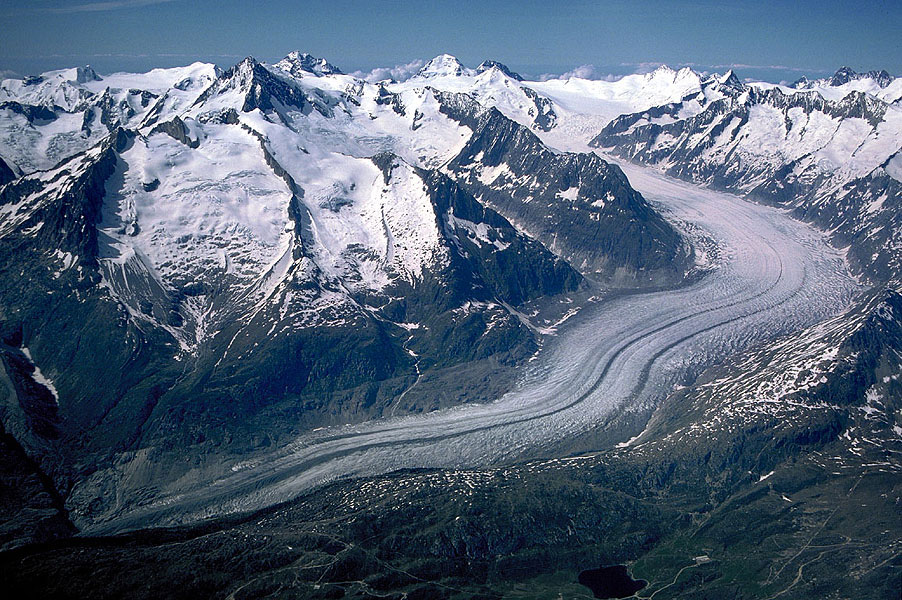 The largest glacier in the European Alps, the Grosser Aletschgletscher from the air. The glacier descends for 23 km from peaks of over 4000 m, and supplies meltwater for a major electrical power station owned by the Swiss railway system. JA | 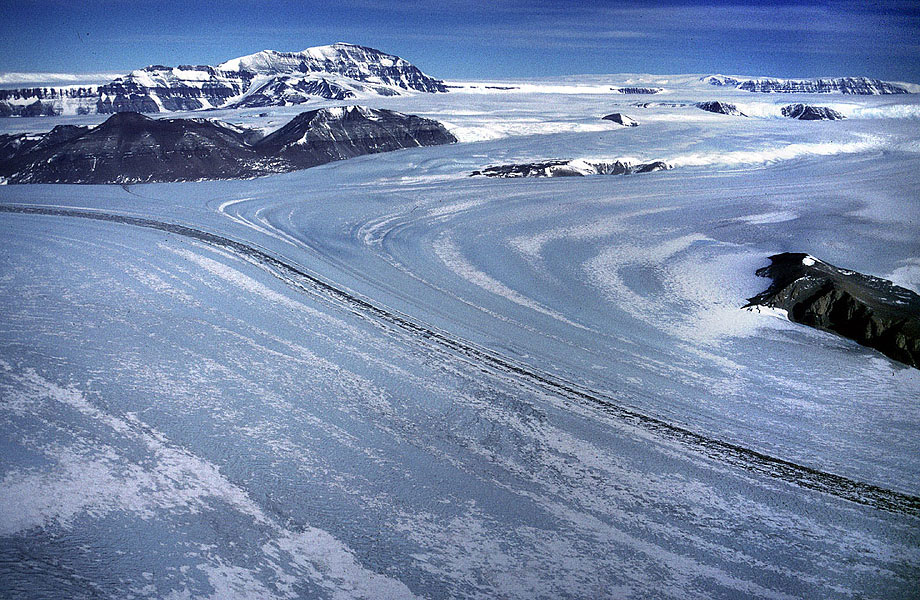 Discharge from the polar ice sheets is commonly via outlet glaciers. Here, the upper Shackleton Glacier, flowing from left to lower right, together with its tributaries, are leaving the Polar Plateau in Antarctica, and will eventually drop down to sea level and form part of the Ross Ice Shelf. MH | 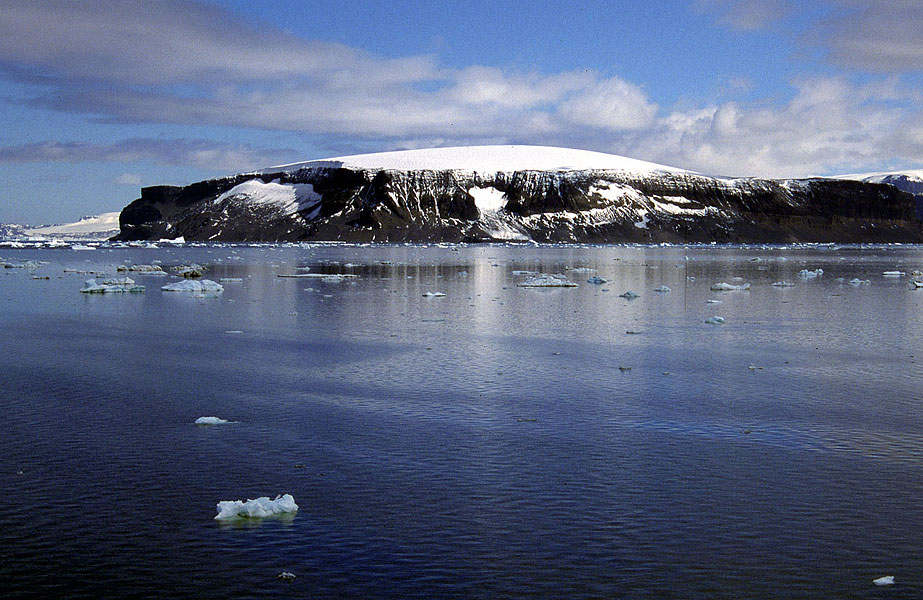 A small ice cap on the northeast side of James Ross Island, Antarctic Peninsula region forms a white dome-shaped feature, capping the dark grey volcanic rocks below. MH | 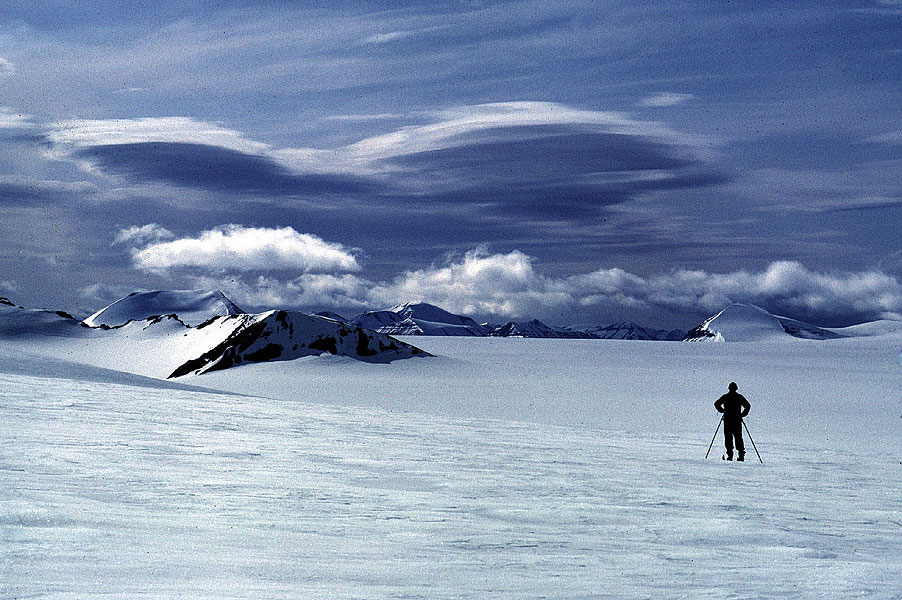 The highland icefield of Lomonosovfonna, in northeastern Spitsbergen forms an elongate spine of ice through which mountains of around 1500 m in height project. From this icefield, glaciers descend in different directions, most of them reaching the sea. MH |
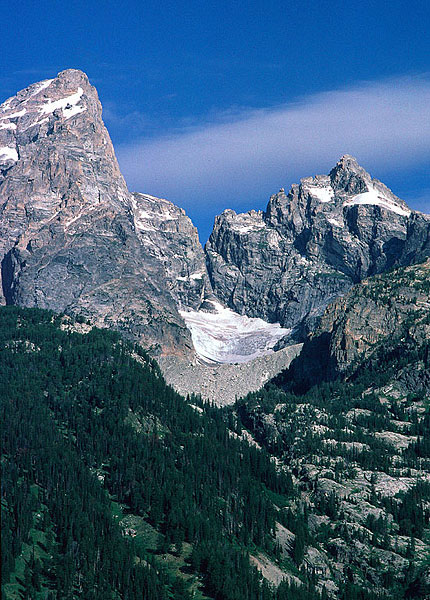 The smallest glaciers are only a few hundred metres across, such as this tiny cirque glacier (Teton Glacier) in Grand Tetons National Park, Wyoming, USA. JA | 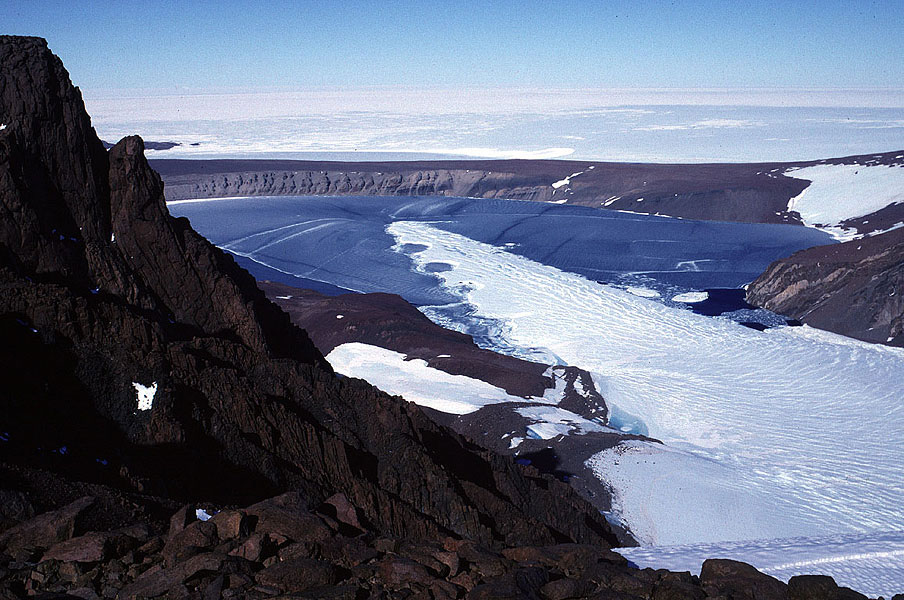 Cold glaciers entering water bodies typically have floating glacier tongues. In the Amery Oasis of East Antarctica we see the local mountain glacier, Battye Glacier, descending into the mostly frozen Radok Lake. The featureless white background is the Amery Ice Shelf. MH | 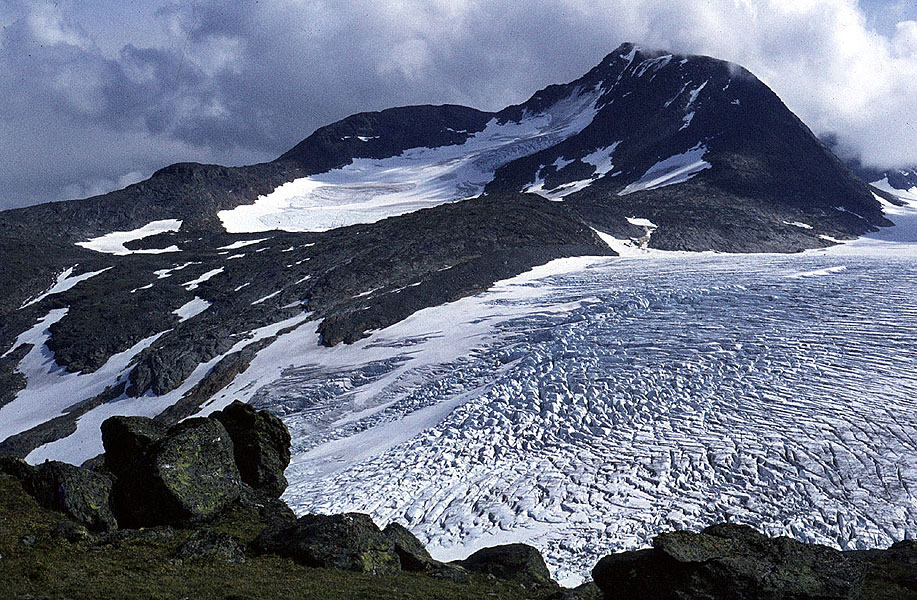 Cirque glaciers such as Skoltbre on the peak of Oksskolten (1916 m) in Nordland, Norway, have formed some of the most attractive glacial landforms in places like the British highlands or the Rockies. Below the cirque is the heavily crevassed valley glacier Austre Okstindbre, which descends from a small ice cap. MH | 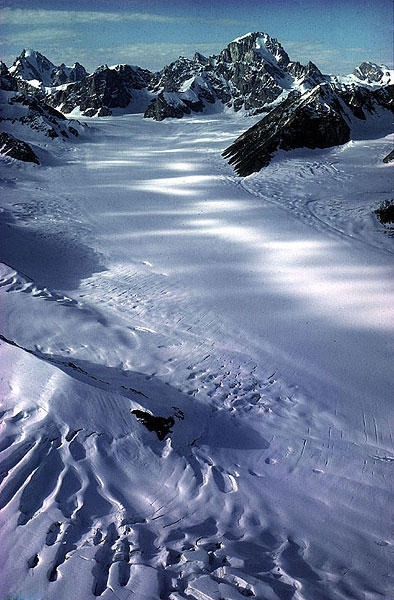 The Stauning Alper of East Greenland are classic alpine peaks of granite, separated from the main ice sheet, bu heavily eroded by valley glaciers. The highest peak is Dansketind (2930 m), as shown here, from which a valley glacier descends coastwards for several kilometres. MH |
 Fast-flowing glaciers that reach the sea discharge large numbers of iceberg. Kronebreen in NW Spitsbergen is one of the most prolific in the Svalbard archipelago, and bergs normally litter the beaches of the scenic Kongsfjorden. MH | 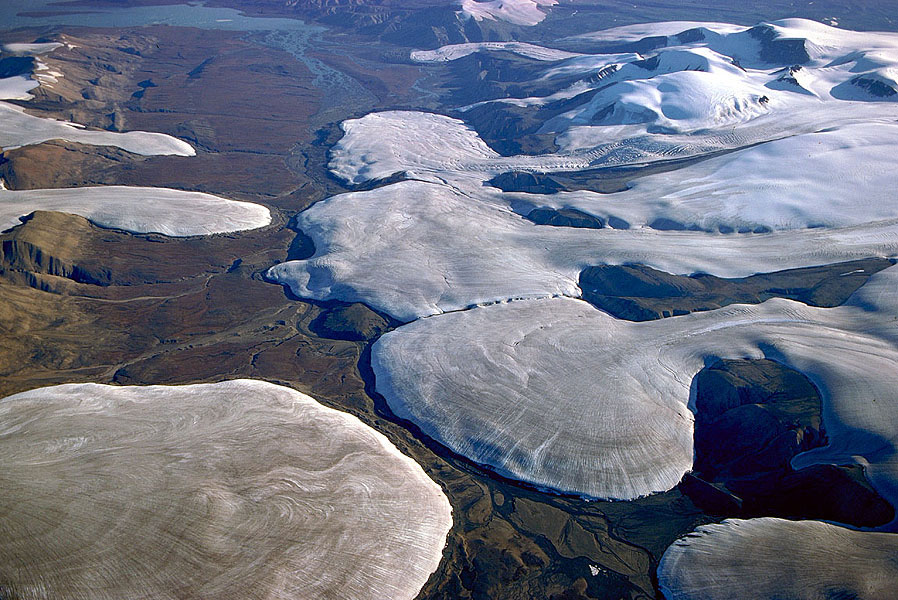 Glaciers that flow through narrow valleys and then reach an open plain spread out as broad lobes known as piedmont glaciers. These striking examples are located near Surprise Fjord in the southern part of Axel Heiberg Island, Canadian Arctic. JA | 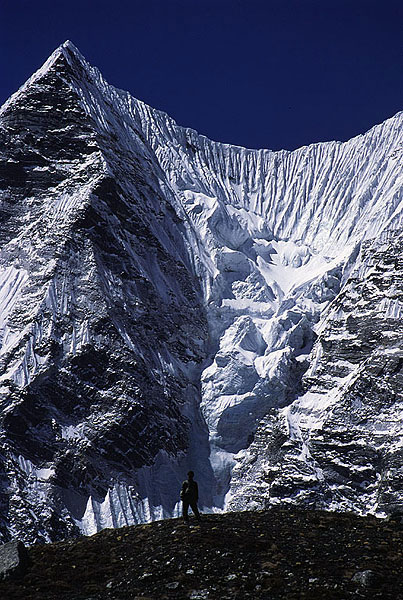 Glacier ice can cling to surprisingly steep mountainsides where it builds up to form avalanche-prone hanging glaciers as here on the NE peak of the long ridge of Ombigaichan (over 6000 m), Khumbu Himal, Nepal. MH | 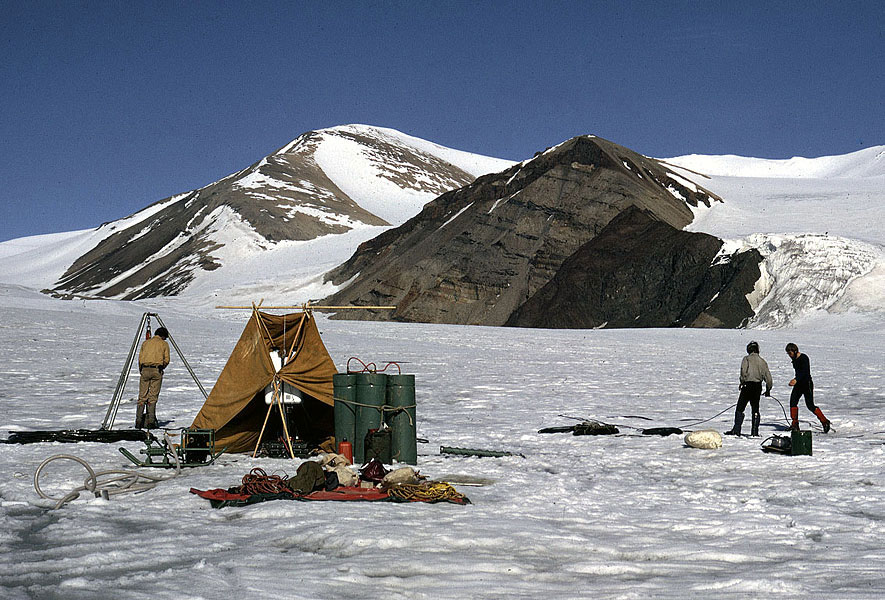 Determining the thermal characteristics of a glacier, such as the White Glacier of Axel Heiberg in the Canadian Arctic shown here, involves the use of a hot water drilling system which penetrates to the bed and allows scientists to insert sensors to automatically record temperature over several years. MH |
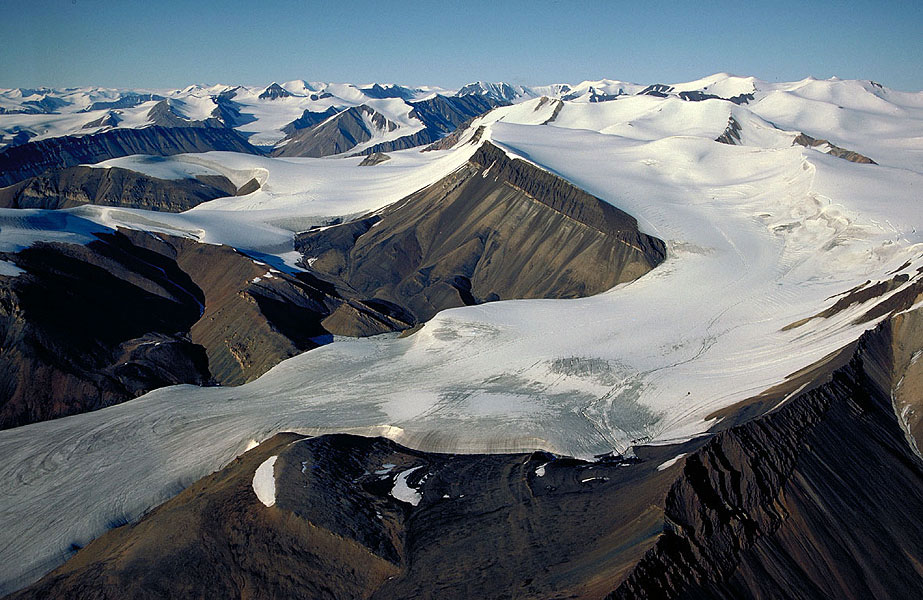 Many glaciers of polar regions contain at least some ice which is colder than the pressure melting point, particularly near the surface and along the rim. They are then called polythermal. Glaciers whose ice is entirely “cold”, i.e. temperatures below the melting point throughout, are common only in Antarctica. JA | | | |
| Photos: Michael Hambrey (MH), Jürg Alean (JA) |